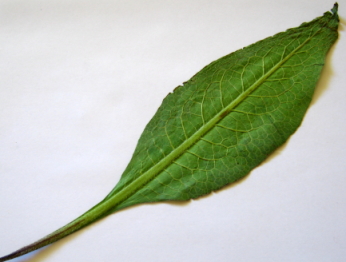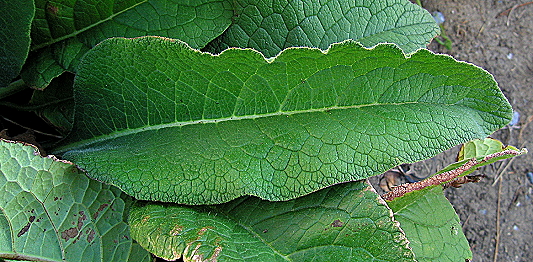Comfrey
Boneset, Consolida, Healing Herb, Knit Bone
 |
|
 |
|
| Plant Family | Boraginaceae |
|---|---|
| Origin | Russia |
| Leaf Shape | Elliptic |
| Leaf Tip | Acute |
| Leaf Base | Attenuate |
| Leaf Margin | Ciliolate |
| Leaf Venation | Arcuate to Reticulate |
| Leaf Arrangement | Acaulescent |
Adaxial surface |
Puberulent |
| Abaxial surface | Pubescent |
| Temporality | Evergreen |
| Habitat | Terrestrial |
Characteristics:
Mature leaves from 6-30 cm in length. Acaulescent; attenuate leaf base, elliptic shape and acute leaf tip. Leaf surfaces and margins covered with fine hairs.
Hidden Traits/Uses:
S. oficionale has long been recognized as an integral part of traditional herbal medicine, and Euell Gibbons describes it as "an ideal herb for making home remedies for use by amateur herbalists," and with good reason. Comfrey is high in calcium, potassium and phosphorus, trace elements, and has significant amounts of vitamins A and C. The myriad of medicinal uses are beyond the scope of this summary, however comfrey is said to be effective as both ingested and external applications. This author has used comfrey in an oatmeal salve to combat poison oak, to great effect.
Comfrey can also be used as a compost activator, green mulch/manure, biomass (fast growing), animal forage, salad greens, among others.